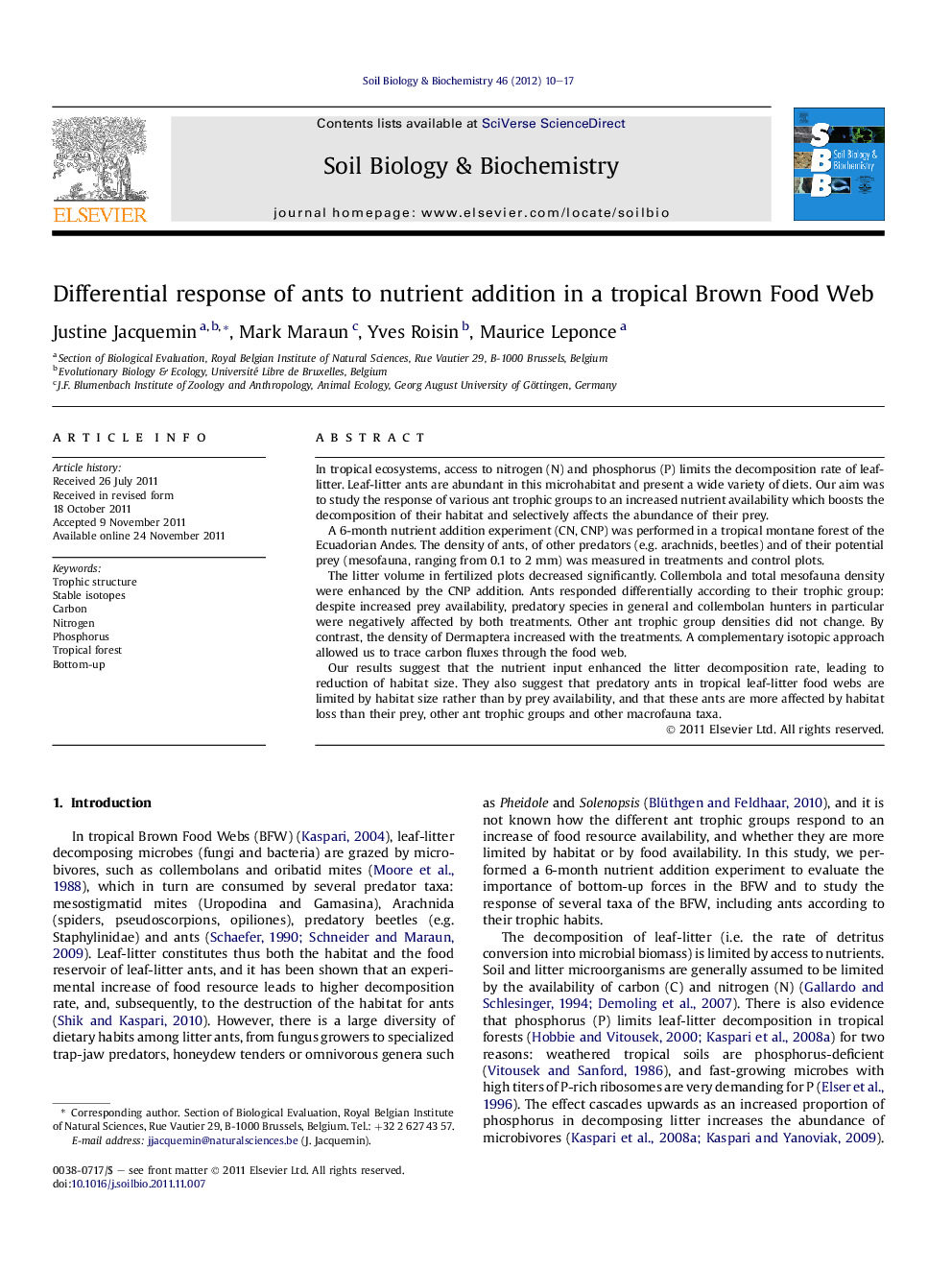| کد مقاله | کد نشریه | سال انتشار | مقاله انگلیسی | نسخه تمام متن |
|---|---|---|---|---|
| 2024999 | 1542638 | 2012 | 8 صفحه PDF | دانلود رایگان |

In tropical ecosystems, access to nitrogen (N) and phosphorus (P) limits the decomposition rate of leaf-litter. Leaf-litter ants are abundant in this microhabitat and present a wide variety of diets. Our aim was to study the response of various ant trophic groups to an increased nutrient availability which boosts the decomposition of their habitat and selectively affects the abundance of their prey.A 6-month nutrient addition experiment (CN, CNP) was performed in a tropical montane forest of the Ecuadorian Andes. The density of ants, of other predators (e.g. arachnids, beetles) and of their potential prey (mesofauna, ranging from 0.1 to 2 mm) was measured in treatments and control plots.The litter volume in fertilized plots decreased significantly. Collembola and total mesofauna density were enhanced by the CNP addition. Ants responded differentially according to their trophic group: despite increased prey availability, predatory species in general and collembolan hunters in particular were negatively affected by both treatments. Other ant trophic group densities did not change. By contrast, the density of Dermaptera increased with the treatments. A complementary isotopic approach allowed us to trace carbon fluxes through the food web.Our results suggest that the nutrient input enhanced the litter decomposition rate, leading to reduction of habitat size. They also suggest that predatory ants in tropical leaf-litter food webs are limited by habitat size rather than by prey availability, and that these ants are more affected by habitat loss than their prey, other ant trophic groups and other macrofauna taxa.
► Despite increased prey density, predatory ant density decreases with nutrient addition.
► Predatory ants seem more limited by habitat volume than by prey availability.
► Ants respond differentially to the nutrient supply according to their trophic group.
Journal: Soil Biology and Biochemistry - Volume 46, March 2012, Pages 10–17